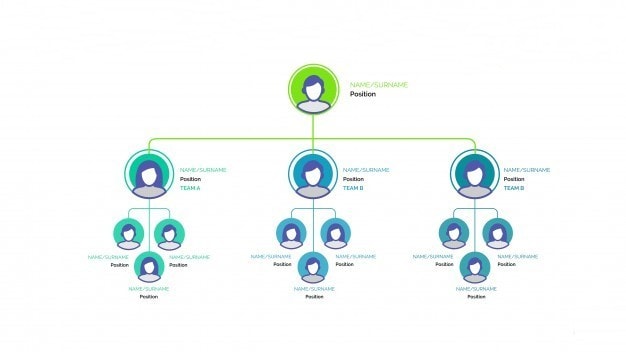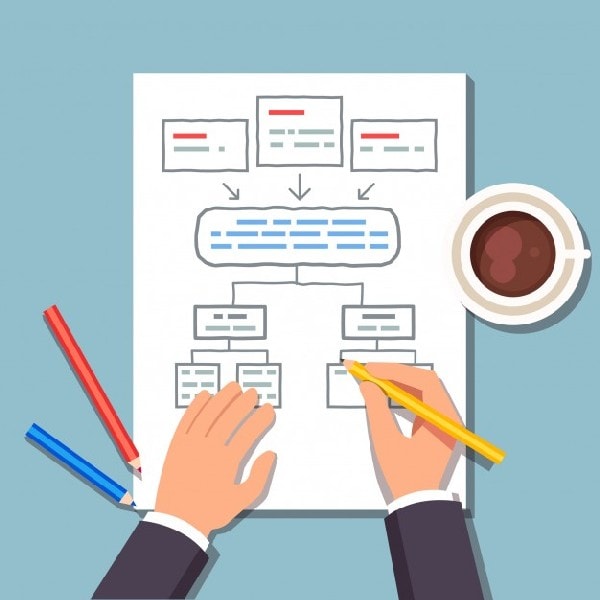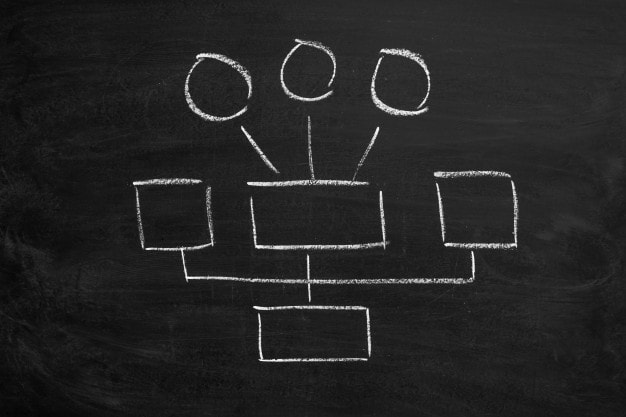
What are Organizational Charts? Types and Uses of Organizational Charts

Organizational charts are visual representations of a company's structure, showcasing job positions and their relationships They come in three types - hierarchical, flat, and matrix - and serve various uses While they have principles and advantages, they also have limitations Drawing one involves determining the hierarchy and layout of the company
An organizational chart is a visual diagram that depicts the hierarchy and interrelationships of job positions within a company. It is commonly employed to illustrate the organizational structure of various entities, including businesses, governments, and other organizations.
What is Organizational chart?
The Organizational chart provides a visual representation of an organization’s formal structure, depicting the flow of information, responsibility, and authority. It serves as a tool to understand the management functions, their subdivisions, and the hierarchical levels within the company. By examining the chart, one can easily comprehend the company's design and the role of each employee in the organization.
The Organizational chart shows the following
The relative position of every department in an organization
The interrelationship of every department in a company
Relationships between various managers in a company
The names of managers and the employees they supervise in a company
To identify omission of specific functions in an organization
Pinpoints illogical groupings of functions in a company
An Organizational chart is also known as
Organogram
Organigram
Types of Organizational Chart
The three types of Organizational chart are as follows-
1. Hierarchical
The hierarchical organizational chart follows a top-down approach, with key players and functions at the top and subordinates in lower positions. Its pyramid structure facilitates vertical communication between members and their direct reports. This chart's strong suit is its clear and defined chain of command, which promotes stability and clarity. However, its downside is its potential rigidity.
2. Flat
The horizontal chart, also referred to as the flat organizational chart, places individuals on the same level. This structure consists of two tiers - the upper level comprising top executives and the lower level consisting of workers.
The flat organizational chart highlights the importance of power equality and autonomous decision-making, making it a suitable choice for smaller entities. However, in larger corporations, this chart may not be the best fit due to the potential for conflicts amongst employees. Despite this limitation, the flat organizational chart promotes autonomy and encourages teamwork, making it a popular choice for many organizations.
3. Matrix
Individuals in this complex Organizational structure are organized based on their skill sets, department, and reporting head, with teams and employees interconnected through an Organizational matrix chart that involves multiple supervisors or managers. While the matrix chart promotes cooperation and productivity, it also creates a potential conflict of interest and divided loyalties.
Uses of Organization charts
The Organizational chart is an essential management tool that is used for several purposes like
Resource planning
Workforce planning
Showing work responsibilities
Reporting relationships
Manage change or growth
Improving communication lines
Budgeting
Benchmarking to competitors
Creating employee directory
Restructuring
Helping the employees in understanding the importance of their role
Providing information about business structures
Offering information about data hierarchies
Keep in mind the following principles before framing an Organizational chart
Instead, make the organizational chart flexible and simple. Allow for open communication and collaboration between different levels of employees. This will empower individuals to take initiative and make decisions while still maintaining a clear chain of command. By creating a culture of trust and respect, the organizational chart becomes a tool for success rather than a hindrance to productivity.
Define the lines of position to avoid overlapping of job positions
Avoid unnecessary concentration of duty at any given point
It is essential to maintain the balance of the Organizational chart and not be influenced by individuals or personalities
The advantages of the Organizational chart are as follows-
It assists in specifying the responsibility and authority of every position in an organization
It depicts the relationship between the staff members of an organization
It helps to divide the functions of an organization and its departments
It assists in designing and planning the Organizational structure to meet the objectives and goals of a business
It defines the relationships between different people so that the workflow remains smooth
It can identify if a workers workload is too heavy or not
It assists in finding out about the competency of an employee in his position
There is no chance of overlapping and duplication of duties
The information center is a valuable resource for new hires since the visual display simplifies the understanding of different levels of responsibility and authority within the organization. It also clearly outlines the tasks assigned to each employee and the corresponding supervisor responsible for overseeing their work.
It helps in pointing out the deficiencies and faults in the organization so that prompt remedial action can be taken
It is an essential tool as it helps in the decision-making process
It enhances employee performances
In some cases it helps to analyze the budget and generate reports
It can design work teams
It acts as a guiding force while making plans for expansion
Limitations
The limitations of Organizational charts are as follows-
As employee turnover rates increase, the accuracy of the Organizational chart diminishes rapidly. This is because the chart depicts only formal relationships within the organization and fails to capture the dynamic nature of social or informal relationships.
The Organizational chart shows a line of authority but not how it is exercised
They do not include customers who are very important for an organization
However, it is crucial to regularly update the chart to ensure that it remains relevant and useful. An outdated chart can lead to confusion, miscommunication, and even costly mistakes. Therefore, companies should invest in systems or tools that make it easier to update the chart and ensure that it reflects the current organizational structure. This will help employees navigate the company hierarchy more effectively and ultimately improve the overall efficiency and productivity of the organization.
Principles of Organizational charts
Plan the hierarchy – Determine the top-level positions such as CEO, COO, and CFO, and then move on to the middle and lower levels.
Consider the tasks – Think about the tasks that each position will be responsible for, and make sure that they are clearly defined.
Identify the reporting structure – Determine who will report to whom and how communication will flow within the organization.
Finalize the chart – Once all the details have been sorted out, create the final version of the organizational chart and make sure it is easy to read and understand.
Collect all relevant data including contact details, photographs, and other pertinent information. Clearly define the lines of authority and record them on the chart. Divide the organizational chart into smaller, more manageable sections to ensure consistency and lead to the highest level of organization. Categorize sections into units, teams, departments, locations, and projects.
Provide context – It's important to provide context for each department and individual within the organizational chart. This can be achieved by including job titles, responsibilities, and relationships to other departments.
Highlight key positions – Highlighting key positions within the organizational chart can help to emphasize their importance and impact within the company. This can be achieved through the use of bold font or highlighting.
Keep it simple – While it's important to provide essential details and context, it's equally important to keep the organizational chart simple and easy to understand. Avoid using overly complex language or convoluted design elements.
Regularly update – As departments and positions within a company may change over time, it's important to regularly update the organizational chart to reflect these changes. This can help to ensure that everyone within the company has access to accurate and up-to-date information.
Plan for updates – change is the only constant hence make room for change in the Organizational chart. Keep it updated so that it remains useful for a more extended time

















